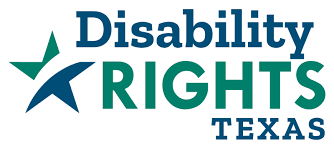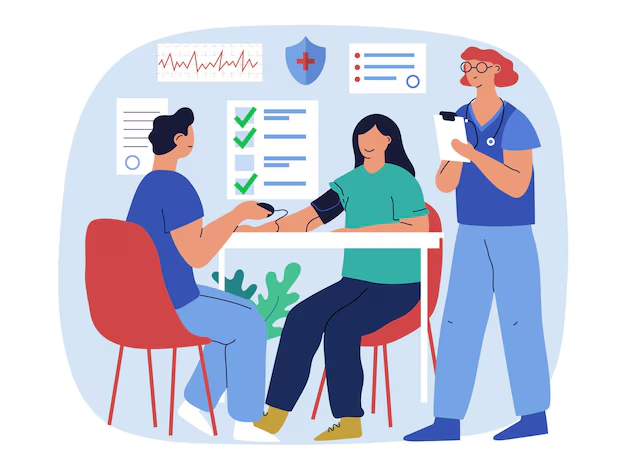June 16th, 2022
1. An updated FAQ was promised as of May 23rd, 2022, and there is still no evidence of this FAQ update. When will this occur?
It is the intent of HHSC to have the updated FAQ document posted online and a list of accepted attestations by June 17, 2022. HHSC stated that stakeholders submitted 290 questionsin the chat/question box during a recent private June 2022 webinar on the enhanced FMAP. It also stated that the recording of the webinar and handout (which is attached for your review) will also be posted. These items, along with other items already posted (such as the rates, current FAQs, etc.) will be available under the section titled Announcements – subsection ARPA HCBS Provider Retention Funds at: https://pfd.hhs.texas.gov/long-term-services-supports
~ While many of the requirements related to the funds appear to apply equally across the programs to which the funds will be applied, there are nuances specific to each provider type. Though some comments and answers were prefaced with the program type to which the answer applied, many were not. As the result, it would be helpful if:
a) When adding the questions and answers to the FAQs, if HHSC identified which program(s) the questions and answers apply to.
HHSC did not answer this in its response or address at ths time.
b) HHSC would conduct separate webinars for each program for which the funds will be applied. This would assist providers in better understanding the requirements related to the program they operate. Though not inclusive, following is one example of why a separate webinar for each eligible program-type would be helpful: The presenter stated that on the attestation form providers are to report the number of direct care/attendant and nurse positions and number of vacant positions – not FTEs. Others heard this differently with some of the opinion that this only applies to one of the programs to which the funds are available with all other programs needing to report “total (not inclusive of direct care and nurses) staff positions and vacancies” across their operations.
The number of positions reported on the initial report and final report is dependent on the identifier utilized by the provider. If a provider will report using their NPI that is associated with a number of contracts, the provider should report the number of direct care and nurses across their organization for eligible services. If a provider reports using a specific contract, then the provider should report the number of direct care and nurses associated with that contract for the eligible services.
2. What are the expectations for reporting that the funds were spent in accordance with the rules? HHSC stated that the cost reports will not be used to determine compliance.
In addition to the response immediately below, HHSC responded, that the attestation form providers must sign and submit serves as the vehicle to confirm compliance, similar to how compliance is confirmed with the COVID add-on funds providers are receiving. In other words (or so it appears), HHSC will not audit for compliance or require any reporting of how one spends the funds through cost reports or an accountability report. See slide 10 on the link above to the handout from the meeting with HHSC, for further details and HHSC’s ability to recoup funds if the attestation form and initial and final reports providers must complete are not submitted. The attestation form MUST be signed by July 1, 2022.
The attestation form is available at:https://www.surveymonkey.com/r/2QG7NSB
~ If cost reports will not be used, then how will HHSC determine compliance, and, more importantly, base recoupment for misuse of funds?
HHSC is using the attestation and reports to confirm compliance with the HCBS ARPA Spending Plan. The reports will only collect position information and will be utilized for informational purposes only. The adopted TAC Rule 355.207 provides additional information on potential recoupments based on fraud or disallowed costs from CMS.
~ Will the provider be held accountable for how an entity, such as a DH, spends the funds? It is the provider who must attest to how the funds are used, thus at risk of recoupment. Providers do not have authority to ensure the DH spends the funds as required.
Other than the responses above, this was not answered in HHSC’s response.
3. Related to the above, the HHSC presenters at the meeting seemed to indicate a more restrictive use of the funds than specified in the rules. 355.207 (c)(2) seems to state otherwise :” A provider must agree to use at least 90 percent of payments made under this section for recruitment and retention efforts for direct care staff delivering HCBS services as defined in subsection (b) of this section. Payments made under this section can includefinancial compensation directed toward direct care staff, including lump-sum bonuses, retention bonuses, and paid time off to receive a COVID-19 vaccination or to isolate after receiving a positive COVID-19 test. Funds under this section can be used to pay payroll and unemployment taxes and workers’ compensation necessary to implement the financial compensation for HCBS direct care staff.” The words ‘can include’ imply there are other recruitment and retention activities for which the 90% may be used, and also parallels
HHSC’s response in the preamble to the adopted rule which states the funds, though not limited to, may be used to make payments for lump-sum bonuses, retention bonuses, paid time off for a vaccination, etc.’
The above issue was further complicated by a comment made by HHSC in today’s Senate Finance Committee. HHSC indicated that the funds could be used to cover overtime and hazard pay (both of which providers would appreciate) which contradicts a statement made during the meeting with HHSC.HHSC’s responses to stakeholder comments when the rule was published in the Texas Register as adopted. The requirement that providers use HCBS ARPA funds for one-time financial compensation for direct care staff is consistent with the Centers for Medicare and Medicaid’s approval of HHSC’s spending plan. While 1 TAC 355.207 does allow for additional flexibilities for use of funds related to broader recruitment and retention efforts, HHSC is encouraging providers to prioritize one-time financial compensation for direct care staff to align with Federal approvals.
During this meeting with HHSC, they stated that a provider could spread out bonuses provided to staff. In other words, one could provide a bonus now, then periodically provide additional bonuses. See also slide 8 the link to the HHSC presentation above..
~ Please clarify how the funds must be used? The updated FAQs provide additional examples of allowable uses. Providers are prohibited from using funds in a way that will result in a decrease to hourly wages after the add-on period ends.
HHSC stated that the updated FAQs will address this question further by offering examples.
~ Are the payments restricted to only staff specifically hired as direct care/attendant, or can bonuses be paid to administrative staff who have been (and continue to serve) serving as a direct care to fill vacant positions? Many providers report that their administrative staff have either left or are leaving because they are tired of filling in as a direct care, and, more importantly can be paid more elsewhere.
In accordance with the HCBS ARPA Spending Plan and TAC 355.207, the funding is for direct care staff.
~ Similar to the above, one of the COVID flexibilities has allowed a family member to provide CFC and respite services. In many cases, families are still serving in this capacity. In other cases,such as those in which the families have returned to work, the provider has hired a direct care worker to perform these services. In either case, can the funds be used to provide bonuses to the family member who either has been serving in this capacity or continues to provide the service?
HHSC is requiring providers to spend 90% on direct care workforce, in compliance with the HCBS ARPA Spending Plan.
4. Must providers accrue the funds first over the course of the payment period, then spend them as was stated during the webinar?
It’s assumed the presenter did not intend this to be a requirement, but that is not what many providers heard on the call. Similarly, it appeared that HHSC told providers that the payments had to be one-time payments rather than a one-time amount spread out over a period of time. HHSC encourages providers to accrue the funds but there is no set spending period for providers.
~ Please clarify the intent of the statement made during the webinar.
Other than the two responses below and the response above , this request was not answered in HHSC’s response. During yesterday’s call HHSC emphasized the yellow highlighted statement above.
~ If the statement made during the meeting is the intent, will a provider be told what portion of the ARPA funds was paid to them after 8/31/2022?
Claims paid through TMHP will indicate the bonus amounts on the R&S.
~ Regardless of whether providers can begin spending now or must wait until all funds are received, what is the date by which the funds must be spent? HHSC presenters seemed to indicate there was no such date.
There is no set date by which funds must be spent.
5. Can providers opt-out?
There is no mechanism for providers to opt-out.
6. Though HHSC has issued several notices regarding the funds, attestation funds, etc., there are providers that are still not aware of the funds or that the add-ons have begun. Notices already sent/posted appear to be generic which can lead to confusion. In other words, if the specific programs are not mentioned in the notice, some providers may think the notice does not apply to them. Example: Some providers think reference to HCBS does not include them. Are there any plans for HHSC to issue program-specific notices about the funds?
HHSC can send out notices that list all applicable programs and services.


